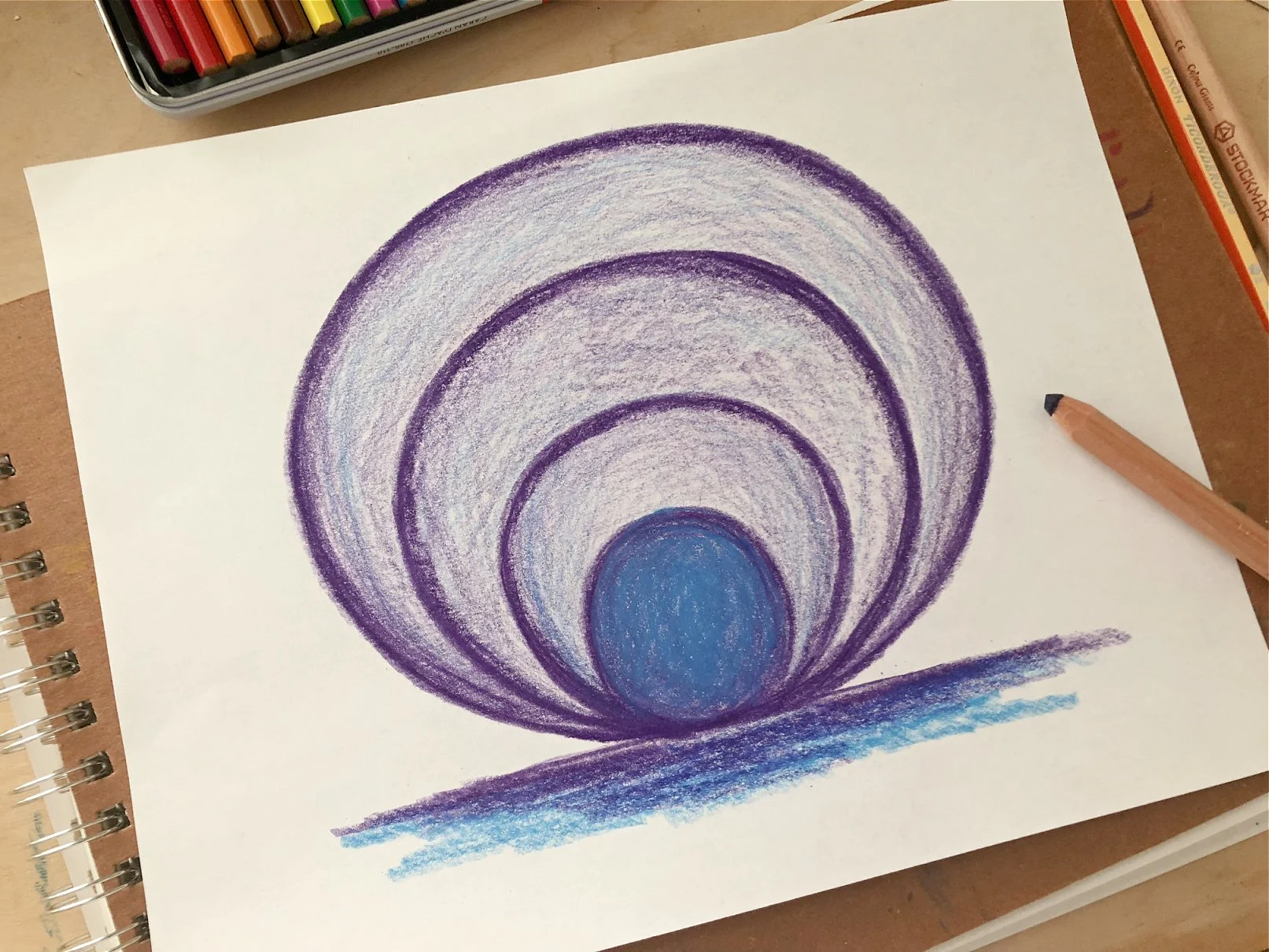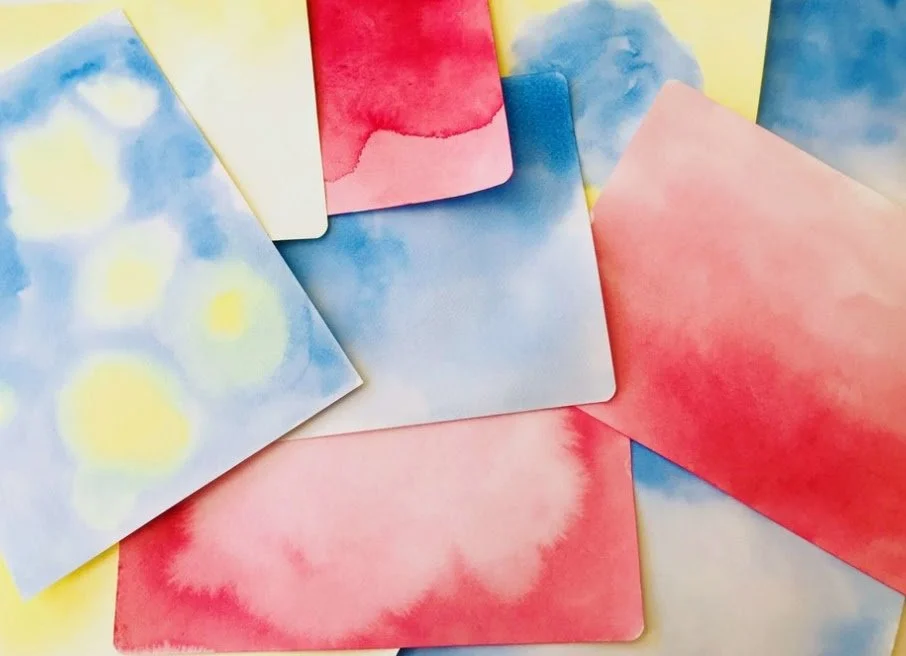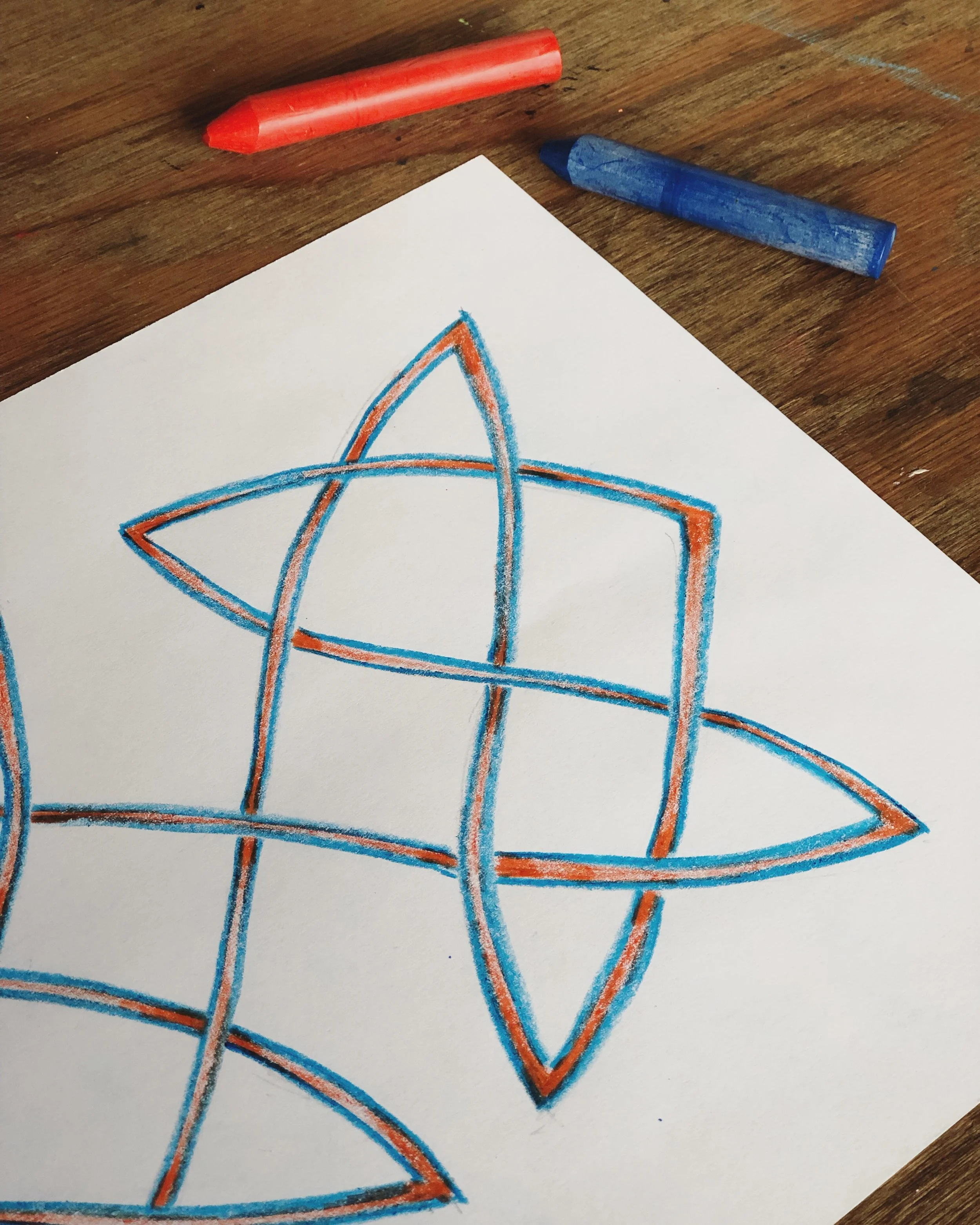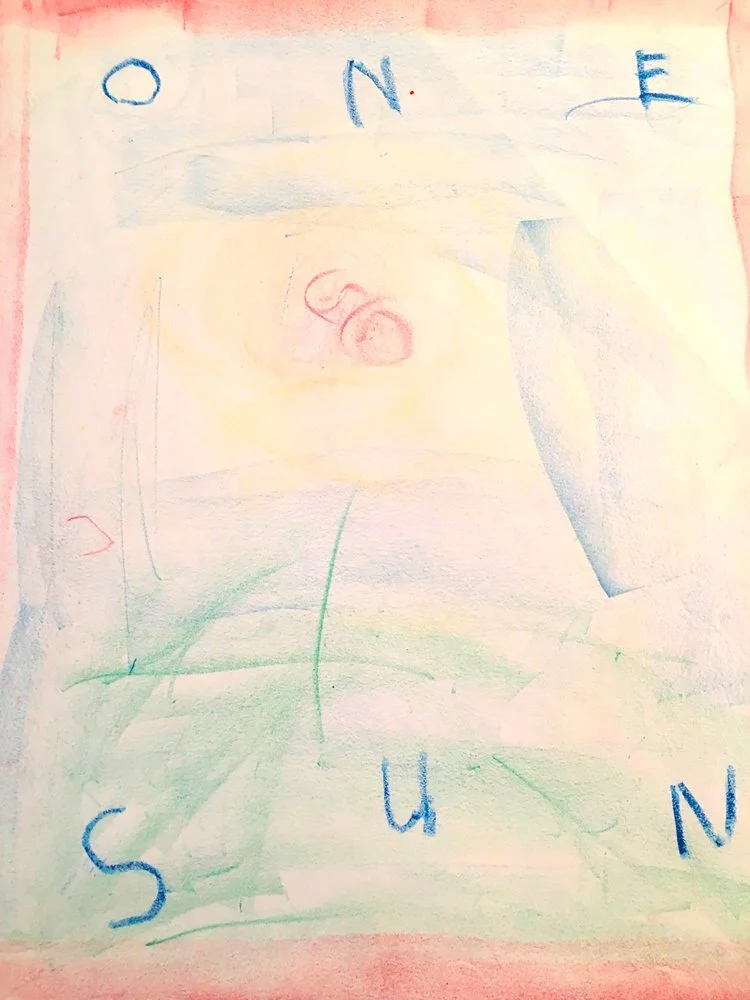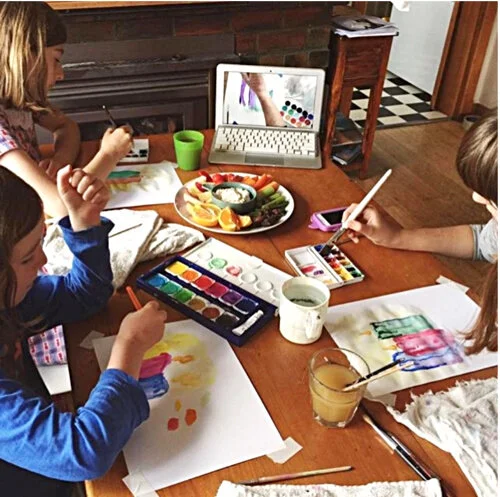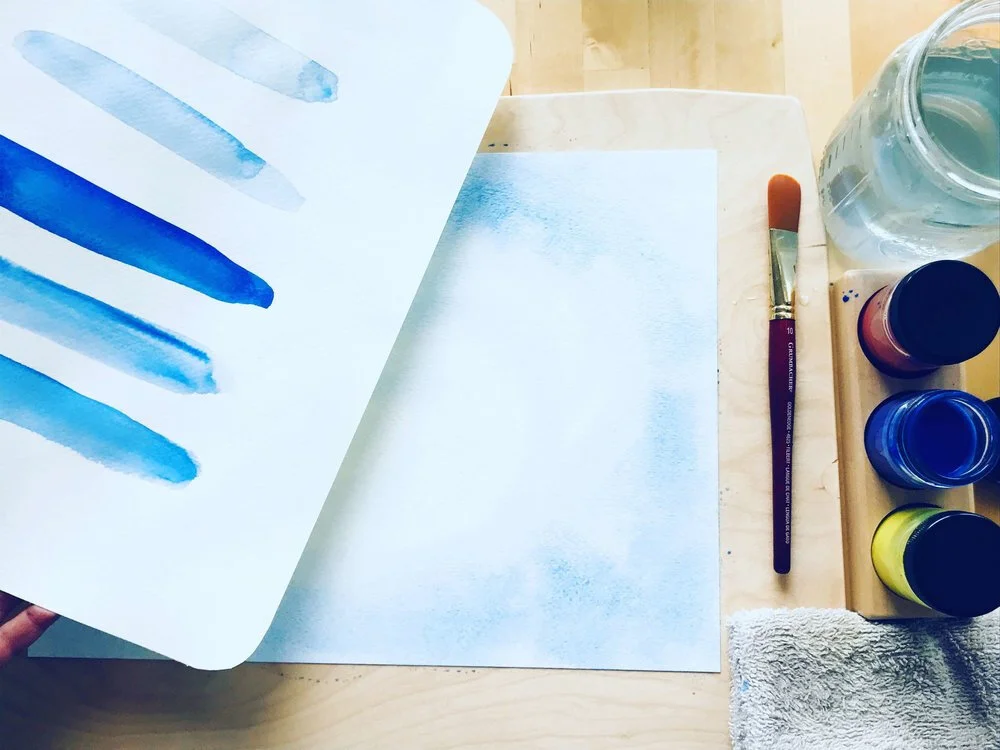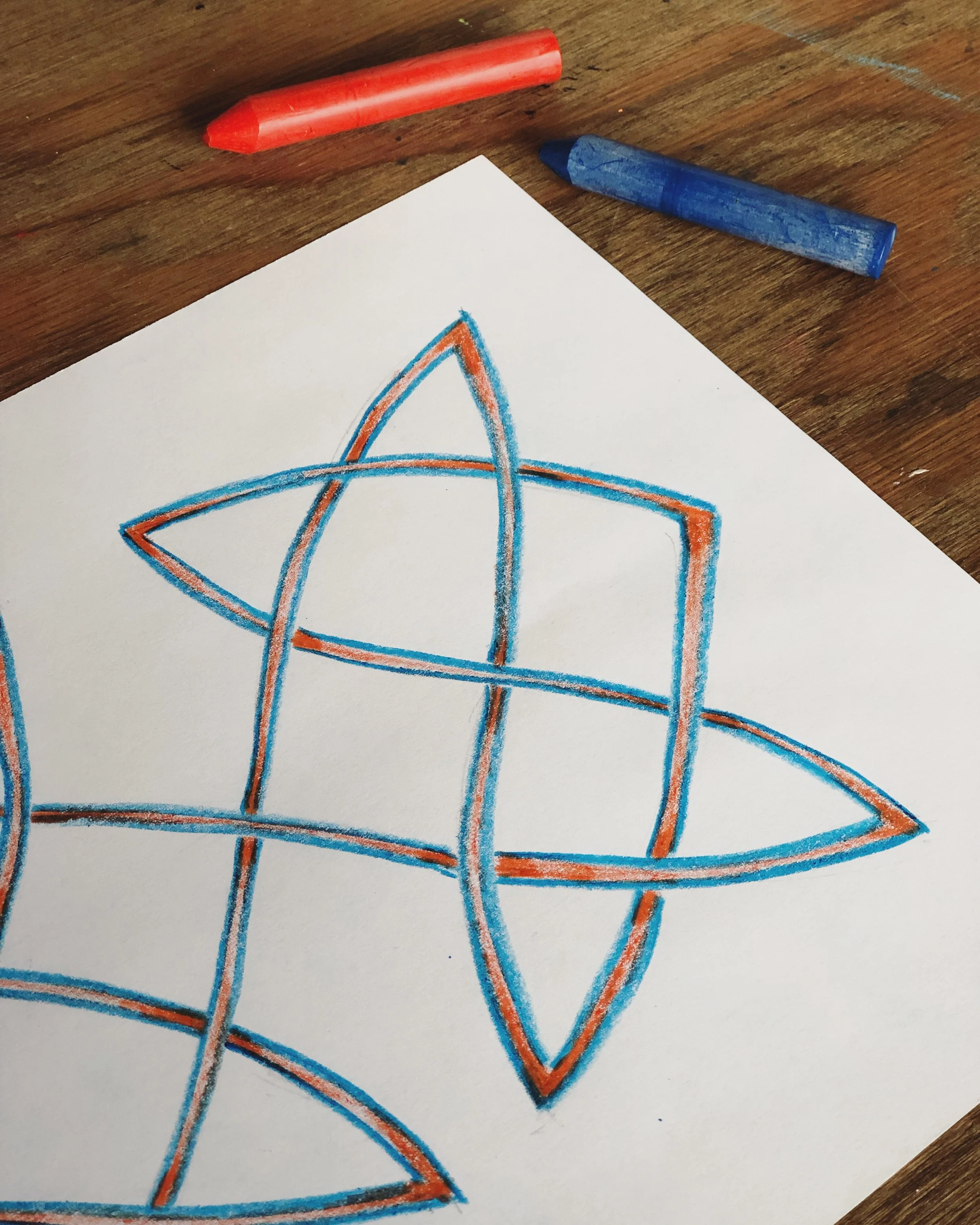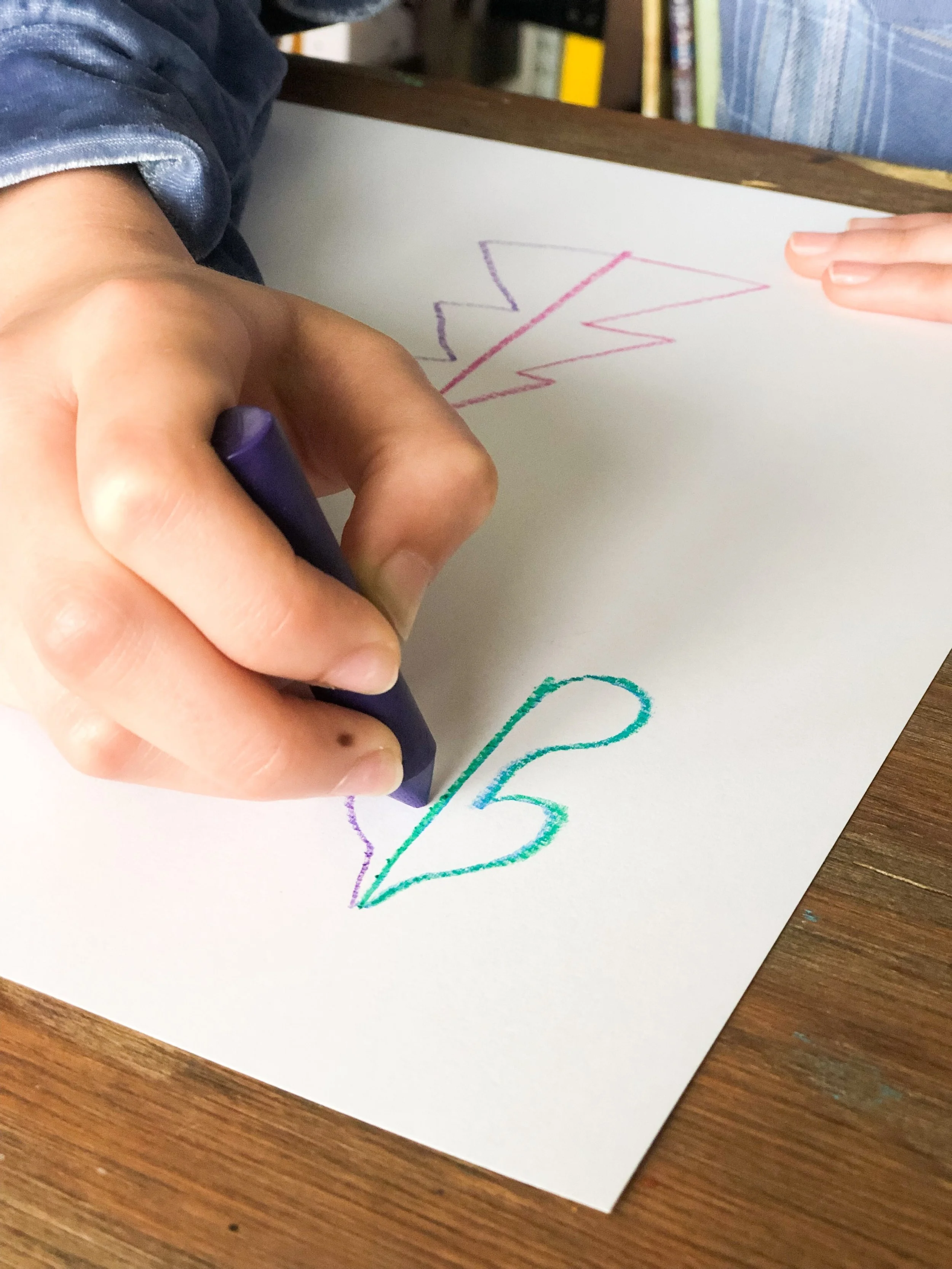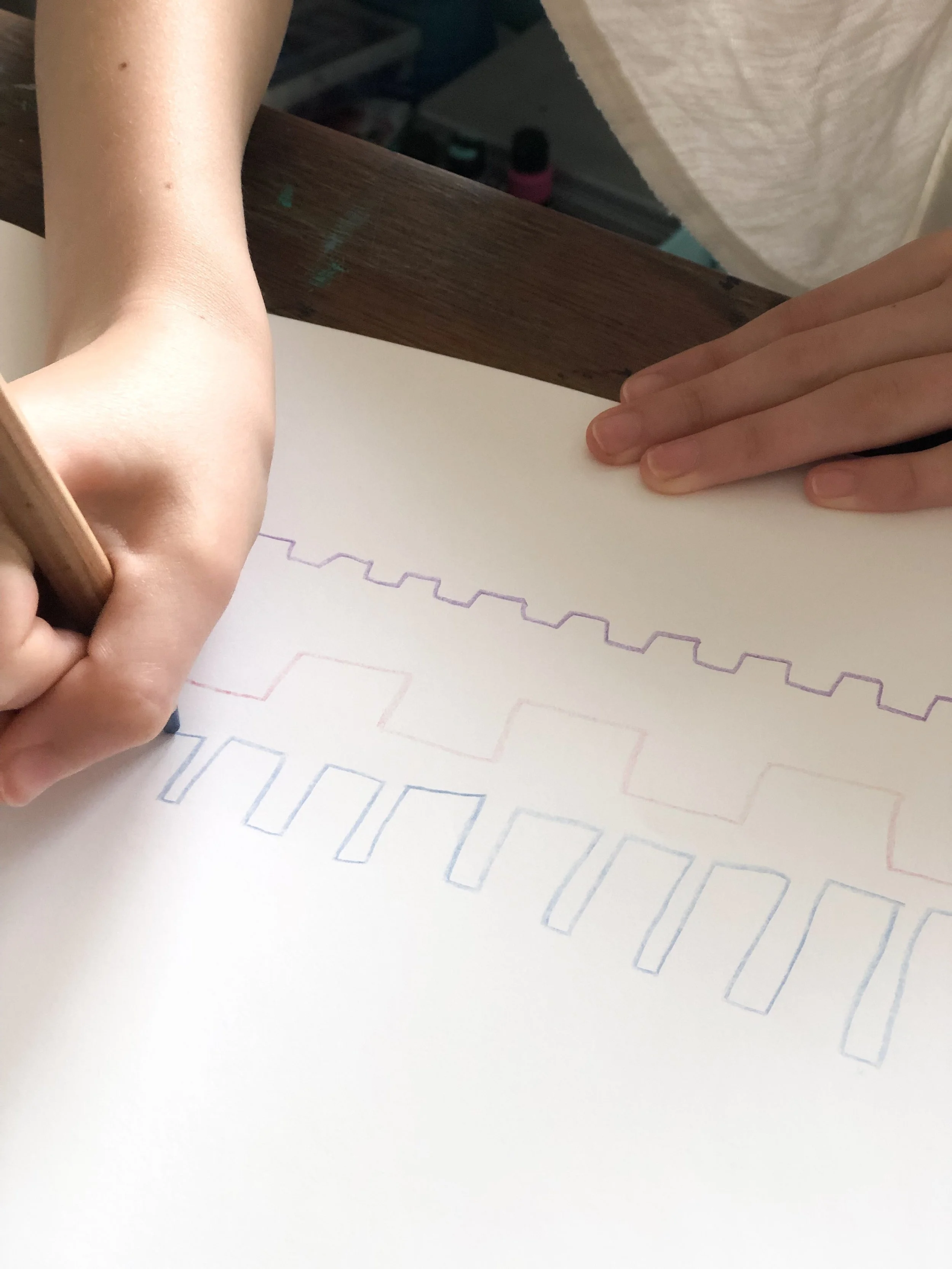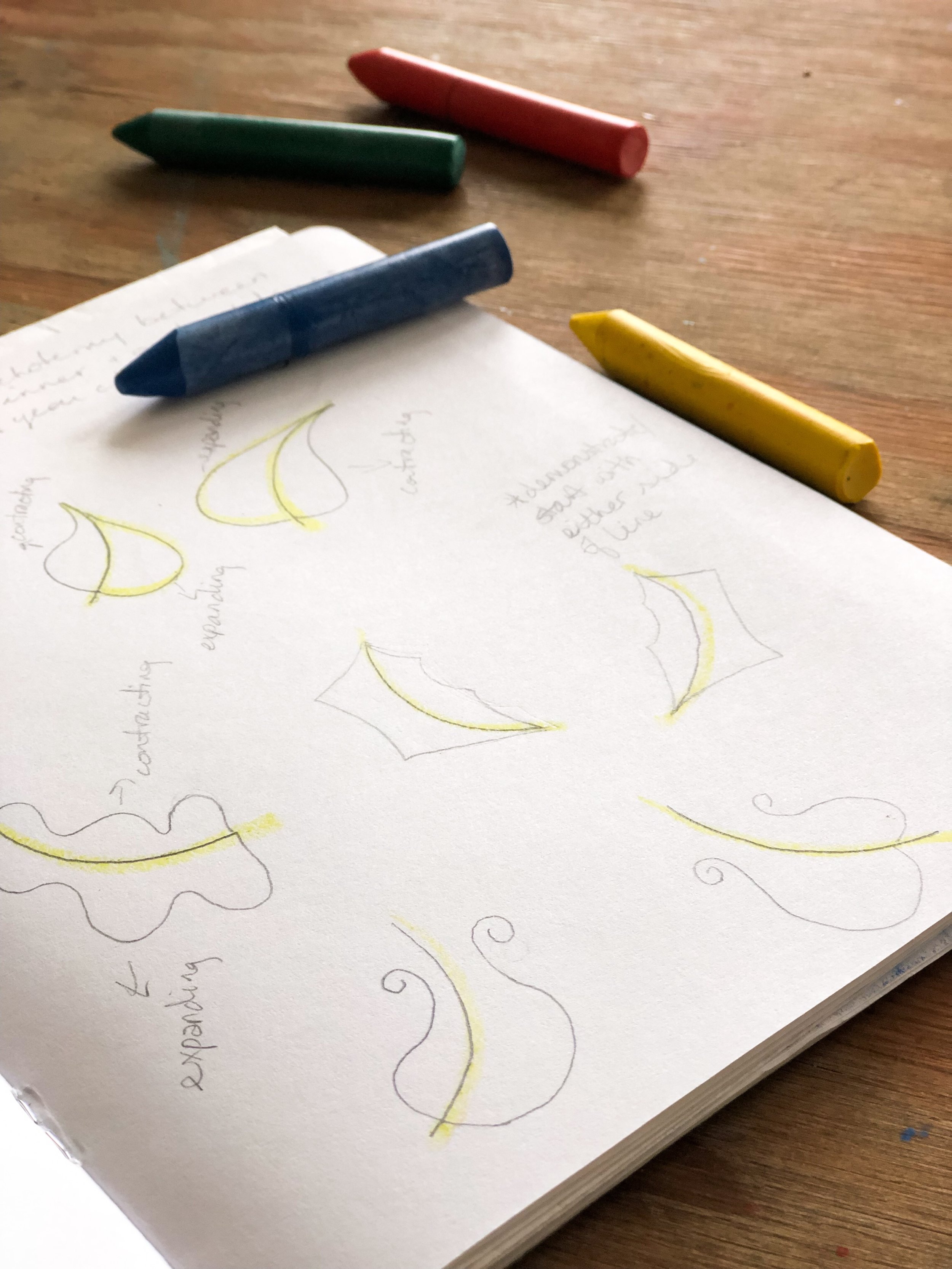
Waldorfish Blog
When children rush - 3 things to consider
Waldorfish Form Drawing teacher Rev Bowen was recently asked by a caregiver enrolled in the course how to work with a child who appears to be rushing through their work. His reply is relevant regardless of the subject being discussed, and we wanted to share it with the Waldorfish community at large!
There are typically three reasons children rush:
1. They feel the work is far too easy, which is never the complete picture.
2. They find the work too challenging.
3. They have a soul habit that the adults around them have engendered, which is virtually always true.
To this lattermost point, I will just remind us all that our culture is fast-paced, convenience, and results-driven. It is very difficult to foster a practice of care and consciousness in these times--but we absolutely must do so.
Take time to observe a child who rushes through their work- you may be surprised at what you discover!
Let’s take a closer look at these 3 possibilities:
1. If the work is actually easy for the student, I then give great focus to the beauty of the work. It is never enough to be right. We must require the "bright" or "advanced" students to take even greater care to be neat, organized, and even beautiful in what they deliver. This will help them enormously when they reach the point of encountering work that truly challenges them.
Picture the math whiz who can do so much work mentally. Their written work in algebra can be scritchy-scratchy, but they have the mental ability to consistently render correct answers. This child may have a destiny to reach great heights in mathematics. However, this will be hindered in advanced classes--perhaps not until late high school or collegiate studies--if the student was never required to work in an organized way. This is true to some extent for every child in all parts of life. Organization and presentation helps.
2. If they find the work too challenging, it is for us to realize this, and adjust so that the work challenges them in a way that they can reach. It is okay for children to sweat. It is okay for a frustrated child to cry. I have seen both in the classroom and I have seen both of these emotional states overcome with diligence and perseverance. These children learned great lessons about meeting resistance, both inward and outward. They learned that they can sometimes achieve more than they at first believe if only they will try and try again. This is a critical human capacity. Thomas Edison tried thousands of filaments for light bulbs before he found one that would work.
3. This is the most common. It is difficult as teachers and parents to instill a strong habit of conscientious work, a devotion to craftsmanship and quality. It may be that the work is neither too easy nor too difficult, but the student simply does not have the habit of attempting his or her best work. This is where the adult teacher or parent must step into his/her ego.
The adult ego knows what is best. The child will almost always seek the path of least resistance, like water finding a crack in a vessel. It is the adult ego which must be the voice of loving authority. That is the balance – LOVING AUTHORITY. One without the other results in a child who will embody either laziness or tyranny.
During the child's growth, the adult must require good effort, good habits, etc. This can be done firmly and lovingly. It does not require the adult to be a drill sergeant. It requires the adult to be consequent and to let the child learn from consequences. It is really that simple.
Also, the adult ego serves as the worthy model.
When the child grows to adulthood, he or she has another habit: whether or not to heed that single voice, sometimes among the many voices of the world, which says what is right and good. That still, small inner voice must be heeded. It will only be so if the child learned to heed the parent's or teacher's voice during childhood.
So, I would begin developing a new habit of effort with your child. This will serve them throughout life. Be aware, new habits require a period of transformation. Just as we encounter in many spiritual texts, this is 40 days (approximately six weeks).
This can be a difficult period, but ultimately worth it.
Starting Waldorf First Grade
Let’s talk all things first grade!
In Waldorf education, there is so much emphasis placed on the transition from kindergarten to first grade, and in many ways, it’s for good reason! The child is ready to transition into the grades, and with that comes a need to approach things a little differently: structure, routine, storytelling, academics, art, and everything in between!
Feeling a little overwhelmed already at how to do it all, and keep yourself sane? We can help.
First, take a nice, deep breath.
Know that you don’t have to do ALL. THE. THINGS. to make a Waldorf grade one curriculum work for you and your child! (And if you’re totally new to homeschooling, click here!)
Start here with our resources and courses; they provide a wealth of information, guidance, and content to support your first grade planning! You’re not alone in this, we promise :)
Let’s get started!
Let’s start at the beginning: what is first grade art curriculum? What kind of artistic experience will the children enjoy in first grade, and what role does the educator play in creating a beautiful and supportive learning space?
We’ve put together this piece as a starting place for you - we’ll be answering frequently asked questions about Waldorf art in first grade, and providing you some helpful resources to help make your artistic journey doable, meaningful, and fun!
Painting with your first grade child can be a truly rewarding and enriching experience, and it’s easy to get started! Amanda Mercer (our amazing course creator!) and Robyn Wolfe (Waldorfish All-Things Creator) have written a piece that walks one through the “whys” of first grade painting; it’s all about creating a meaningful experience (while keeping it simple, - and who doesn’t love that?!)
“Painting lessons create opportunities for students to develop an intimate understanding of the colors through their imaginations, movement, and imitation. When the teacher brings the lessons in partnership with short verses and stories...the children live into each experience fully. ”
First grade form drawing can be incorporated seamlessly into your weekly curriculum. Need an introduction to form drawing in general? Rev Bowen, our form drawing course creator, has written the perfect post to get you inspired, and to get you started!
“The forms themselves, as finished works, may become beautiful, but they are not nearly as important as the processes through which we explore and embody the movements. Form drawings, as finished pieces, are merely the footprints left in a medium such as pencil on paper, evidence of the wonderful movements of the human being and the cosmos. Form drawing, as a practice, can be an essential path of human development.”
Children learn in many ways (through movement, music, and poetry…to name a few!) but one of the key ways a first grader learns is through the ancient art of storytelling!
Traditional first grade Waldorf curriculum uses stories to introduce each letter in the alphabet, each number, and many other aspects as well. Stories create connections, context, and enliven education in a very real way!
Now, you may be saying to yourself, “But I don’t know any stories!” or cringing at the idea of memorizing a fairy tale everyday for a lesson…
Here’s the thing: You already are a storyteller! Seriously!
Our dear friend Sara Renee Logan has written a series of posts that are sure to inspire, empower, and give you the confidence to start incorporating your own stories and others into your weekly routine. Trust us; you’ve got this!
We love all things art (can you tell?) and have been reminded time and time again of its value when it comes to enlivening academics with all things artistic.
Have you ever wondered where this approach comes from, and what, exactly, art does for a growing child? Our friend Cristina Havel has written a resource for you, illustrating the true impact of artistic curriculum in Waldorf education.
“Artistic endeavors sharpen two very important human skills: the ability to shape, or see, and the ability to perceive, or distinguish. When practiced over time using diverse techniques across a variety of subjects, something very special emerges: the ability to shape and perceive new ways of looking at the world.”
Waldorf Art for Beginners
First grade art curriculum can include many things: crayon, pencil, watercolor painting…so many options and fun mediums to choose from!
But, are you feeling a little stuck? Like there are too many decisions and things to figure out to incorporate art into your weekly rhythm?
We’ve got you covered! Check out our Waldorf Art for Beginners course; not only does it include a variety of techniques and mediums to work with, each lesson provides in-depth guidance and instruction; perfect for those just starting out!
Grade One Painting Course
Watercolor painting curriculum in first grade is truly unique, incredibly special, and completely doable for you to do at home with your child! It’s true!
Amanda Mercer, a Waldorf-trained teacher (and overall cool human) has created a truely supportive course for those wanting to bring watercolor painting to their first grader. Not only do the lessons include original verses and step-by-step guidance, they also show how to cultivate a calm, encouraging, and experiential mood with each progressing lesson.
Why wait to get started?
Click here for a free sample from Grade One Painting!
Does making form drawing a part of your weekly first grade rhythm sound... Exciting? Daunting? A little bit of both?
Remember, you don’t have to do all the things yourself; let us handle the form drawing curriculum for you!
Rev Bowen, a master Waldorf teacher, has created a course specifically for the first grade child that guides you through the ins and outs and hows and whys; everything you need to bring this rich Waldorf homeschool curriculum into your rhythm and routine!
Click here for a free Form Drawing Lesson!
Questions about any of these resources? You can contact us, here. We’d be honored to be part of your first grade year!
Waldorf Form Drawing in Grade Four
Now that we reach fourth grade in this progression from first grade, we find that the wholeness has separated into parts.
(*Didn’t read the last post? No worries! Find out more about third grade form drawing here!)
The fraction is an archetype for fourth grade.
The teacher leads the child to experience the fraction and return it to the whole. Just so, woven forms provide the same journey. Woven forms are perhaps the most recognizable elements of Waldorf form drawings, though the woven form has been an artistic theme in various cultures for millennia.
A beautiful woven form creating with crayons.
Fourth grade forms
With the woven form, we take the line and fold it back onto itself, perhaps even with multiple lines. We create a beautifully ordered knot. We weave a fabric. To render this in a drawing requires us to fragment the whole line into many different line segments so that we give the impression that the line has indeed woven itself over and under, over and under. We take the one line and divide into many fractions, but we arrange those fractions so that there is a new one-ness realized. Whether these woven forms are arranged in circular, triangular, or rectangular fashions, there is almost always an inherent geometric foundation evident in the whole.
Likewise, we can also take basic geometric shapes and explore an ordered division of their spaces so that we create equivalent fractions that are both beautiful and true. Each of these free-hand form drawing activities bring us ever closer to an experience of pure geometry. It is important to allow the student to struggle with the realization of these forms with the freehand approach first. Allowing the child to struggle with crawling, standing, and walking builds valuable will-forces that serve the human being throughout life. So too the struggle with geometric forms is a valuable learning experience that builds powerful inner faculties.
Rudolf Steiner urged the first Waldorf teachers to awaken “what will become geometry later—but first, one should keep it all in the realm of freehand drawing.” (Lecture 10, Practical Advise to Teachers).
The drawings and activities of these fourth grade form drawings have their own intrinsic value and can fill a lifetime of exploration in and of themselves. However, as a step on the curricular path, they are also leading toward the fifth grade year of freehand geometric drawing.
Grades 1-4 Form Drawing are OPEN for enrollment.
Related content:
Waldorf Form Drawing in Grade Three
Third grade is very often a time of tremendous change for children…
…and thus it can require that we make tremendous changes in how we meet them.
Form drawing in grade three (teacher training notes)
There is perhaps no more archetypal image that can help us understand the third grade child than that of any creation mythology in which the human being, once united with the Creator, now finds himself separated, forlorn, and bereft. The developing consciousness of the 8-9 year-old begins to have a sense of separateness. There is now an awakening sense of an inner world. The signature of one-ness that holds and sustains the young child is lost. It is a dramatic and necessary step toward individuation. So, the third grade elements of form drawing incorporate this experience.
Forms in third grade
Now we work with forms that explore relationships and change. We bring about forms that challenge us to explore and create new harmonies. This is an exciting time because the forms that we set up for the child can be balanced in many different ways. There is not a “perfectly correct” answer. The “rightness” must be felt by the child and by the teacher.
Learning to live as an individual on the earth is a constant exercise of attempting to find harmony in new ways as new elements arise in our lives. So, the teacher can be as creative in providing new “quests” for the student and then remain open to the practically infinite possibilities that the child has for discovery of corresponding forms. This has a mutually-inspirational quality that provides a lift to the child who struggles with this new sense of the bigness of the outer world and the isolation of the inner world.
“They should be given sufficient space to engage in the process in an exploratory manner. If this is achieved, a rich opportunity for differentiation and mutual inspiration is created.”
Peter Giesen, Form Drawing Workbook
Learn more about our Form Drawing series for homeschooling families and class teachers.
Grades 1-4 are OPEN!
*Click the button below to read about pricing and payment options.
Related content:
Looking for something?
Welcome to Waldorfish! We started this adventure in 2012 out of a desire to make Waldorf training more accessible to class teachers in remote locations and to homeschooling families everywhere! Read more, click here.
WE WON! Our Weekly Art courses were voted “best interactive art program.” Learn more about the award, here.
A few of our most popular blog posts:



